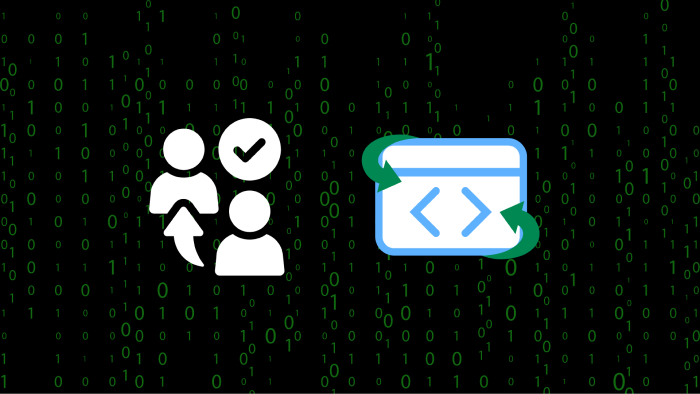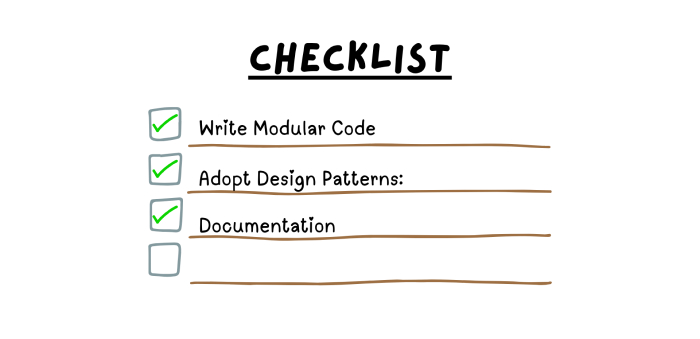Code Reusability
Code reusability is a major concept in software development; it makes you more productive and your code more reliable and maintainable. According to the Standish Group, 29% of software projects succeed, 19% fail, and 52% are challenged due to budget overruns and missed deadlines. One of the main reasons for these challenges is a lack of code reusability techniques. Development teams can solve these risks by focusing on code reusability and improving project outcomes.
What is Code Reusability?
Code reusability refers to the concept of creating software components, modules, or libraries for reuse in projects or software applications. Instead of starting from zero with each project, developers will find that reusing existing code assets saves time and effort, promotes consistency, and ensures standardization.
Key Elements of Code Reusability

Modular Design
- Modularization: By breaking down the code into smaller, independent modules with well-defined interfaces, it becomes portable and reusable. Each module should have a single responsibility and encapsulate a specific functionality. For example, a user authentication module should only have to do with issues regarding authentication.
- Separation of concerns: Adhering to the concern separation principle by breaking different aspects of the application into separate modules or components increases the reusability of code, thereby making the codebase more manageable with easy testability.
Code Organization and Standards
- Coding standards and best practices: Sticking to established coding standards, design patterns, and best practices (for example, SOLID principles) when writing code ensures maintainability and reusability.
- Documentation: In-depth documentation, including comments, explanations, and usage examples, helps fellow developers understand and reuse components, improving software code reusability and making it easier to maintain.

Abstraction and Generalization
- Abstraction: Write code at a higher level of abstraction and encapsulate its implementation details so that the main functionalities are retained in a well-defined interface that can be reused in different contexts.

- Generalization: Design the code components to be as generic and flexible as possible, using parameters or configuration options across various scenarios to enhance its reusability.
Advantages of Code Reusability

- Improved code quality: Since reusable components are often well-tested, the chances of new bugs arising are reduced, leading to higher reliability.
- Increased productivity: Developers can save time and effort because they can use ideas that are already available, ready, and debugged; there is no need to reinvent the wheel in production.
- Consistency and standardization: The reusability of codes across projects paves the way for common and consistent coding practices, naming conventions, and architectural patterns, making it easier for developers to work with in the long run.
- Reduced development costs: This reduces the need for repetitive development efforts and thus becomes a huge saver for the organizations.
- Faster time-to-market: By reusing tried, tested standard components, development time is reduced, speeding up the time-to-market for new products and features.
- Reduced errors: Using pre-verified code leads you to make fewer errors because reusable code is tested many times to ensure its functionality.
- Improved maintainability: Modular and well-documented reusable code simplifies maintenance efforts. Modifications or bug fixes need only be implemented in one central location, impacting all code usage instances.
Code Reusability in Software Engineering

- Object-oriented programming (OOP): OOP principles like inheritance and polymorphism facilitate code reuse by allowing developers to create reusable classes and objects.
- Functions and subroutines: Breaking down code into well-defined functions with specific functionalities allows easy integration into different program parts.
- Libraries and frameworks: Pre-written libraries and frameworks offer many reusable code components that address everyday programming tasks. Developers can leverage these resources to expedite development and benefit from established functionalities.
Code Reusability in Python
Functions and Modules
Functions are blocks of reusable code that perform a specific task. For example:
def add(a, b):
return a + b
def multiply(a, b):
return a * b
# Reusing functions in another part of the application
result_add = add(10, 5)
result_multiply = multiply(10, 5)
Modules are files containing Python code that can be imported and reused. For instance:
math_operations.py
def add(a, b):
return a + b
def multiply(a, b):
return a * b
main.py
import math_operations as mo
result_add = mo.add(5, 3)
result_multiply = mo.multiply(5, 3)
print(result_add) # Output: 8
print(result_multiply) # Output: 15
Classes and Objects
Classes enable code reusability through inheritance and polymorphism. For example:
class Animal:
def speak(self):
raise NotImplementedError("Subclasses must implement this method")
class Dog(Animal):
def speak(self):
return "Bark"
class Cat(Animal):
def speak(self):
return "Meow"
# Reusing classes
animals = [Dog(), Cat()]
for animal in animals:
print(animal.speak())
Libraries and Frameworks
You can reuse code by using existing libraries and frameworks, i.e., NumPy for numbers, Pandas for data, and Django for the web.
import numpy as np # Reusing NumPy functions for numerical computations array = np.array([1, 2, 3, 4]) mean = np.mean(array) print(mean) # Output: 2.5
[blog-subscribe]
Tools and Technologies
Integrated Development Environments (IDEs)
IDEs like Visual Studio Code are equipped with features that promote code reusability:
- Code snippets: These are small chunks of code you can drop into your program. IDEs often allow you to save and manage snippets so you can reuse them across projects.
- Refactoring tools: Refactoring is changing existing code without changing what it does. IDEs have tools for this, such as renaming variables or methods, extracting methods, etc. This makes your code more modular and reusable.
Additionally, tools like Qodo Gen provide IDE plugins that suggest meaningful tests, code reviews, and behavior analysis to enhance code integrity and developer productivity.
Code Repositories
Platforms like GitHub and Bitbucket are code repositories that provide centralized locations for storing and sharing reusable code. They allow:
- Sharing code: You can push your code to these platforms, making it accessible to others who can then use or contribute to your code.
- Version control: These platforms provide version control systems that track changes to your code over time. This allows you to manage and maintain your code easily.
- Collaboration: These platforms provide features for collaboration, such as pull requests and issue tracking. This allows multiple people to work on the same codebase, making developing and improving reusable code easier.
Tools like Qodo Merge integrate with Git platforms to offer automated code reviews and issue detection, enhancing collaboration and code quality.
Package Managers
Package managers like pip for Python, npm for JavaScript, or Maven for Java help distribute and install reusable components. They allow you to:
- Install packages: You can use a package manager to install libraries or packages that provide reusable code. For example, in Python, you can use pip to install packages like numpy or pandas :
pip install numpy pip install pandas
- Manage dependencies: Package managers monitor the libraries your project depends on and ensure they are up to date.
- Distribute packages: If you’ve written a library you want to share with others, you can use a package manager to distribute it.
Best Practices

Write Modular Code
Keep functions and methods focused on a single task.
def fetch_data(source):
# Function focused on fetching data
def process_data(data):
# Function focused on processing data
def save_data(data, destination):
# Function focused on saving data
Adopt Design Patterns
Utilize well-known design patterns like Singleton, Factory, and Observer. Follow the SOLID principles to enhance code quality.
Singleton PatternFactory Pattern

Documentation
Provide clear documentation for reusable components. Use docstrings and comments to explain the purpose and usage of code segments.
Conclusion
In summary, By focusing on modular design, developers can break down code into smaller, independent modules with well-defined interfaces, encouraging ease of reuse. Sticking to coding standards and best practices, such as the SOLID principles, and securing comprehensive documentation makes code more understandable and easier to integrate across various projects. Abstraction and generalization further increase code reusability by encapsulating implementation details and creating flexible, adaptable components.
Tools, technologies, and practices, such as object-oriented programming, functions, libraries, and frameworks, help reduce the developmental complexity and ensure consistency in developing quality code. Tools like IDEs, code repositories, and package libraries make it easier for developers to manage, share, and update code that is frequently used. Utilizing these best practices helps organizations gain a foothold by attaining quicker go-to-market time, reduced development costs, and a much greater project success rate, leading to more reliable and maintainable software solutions.